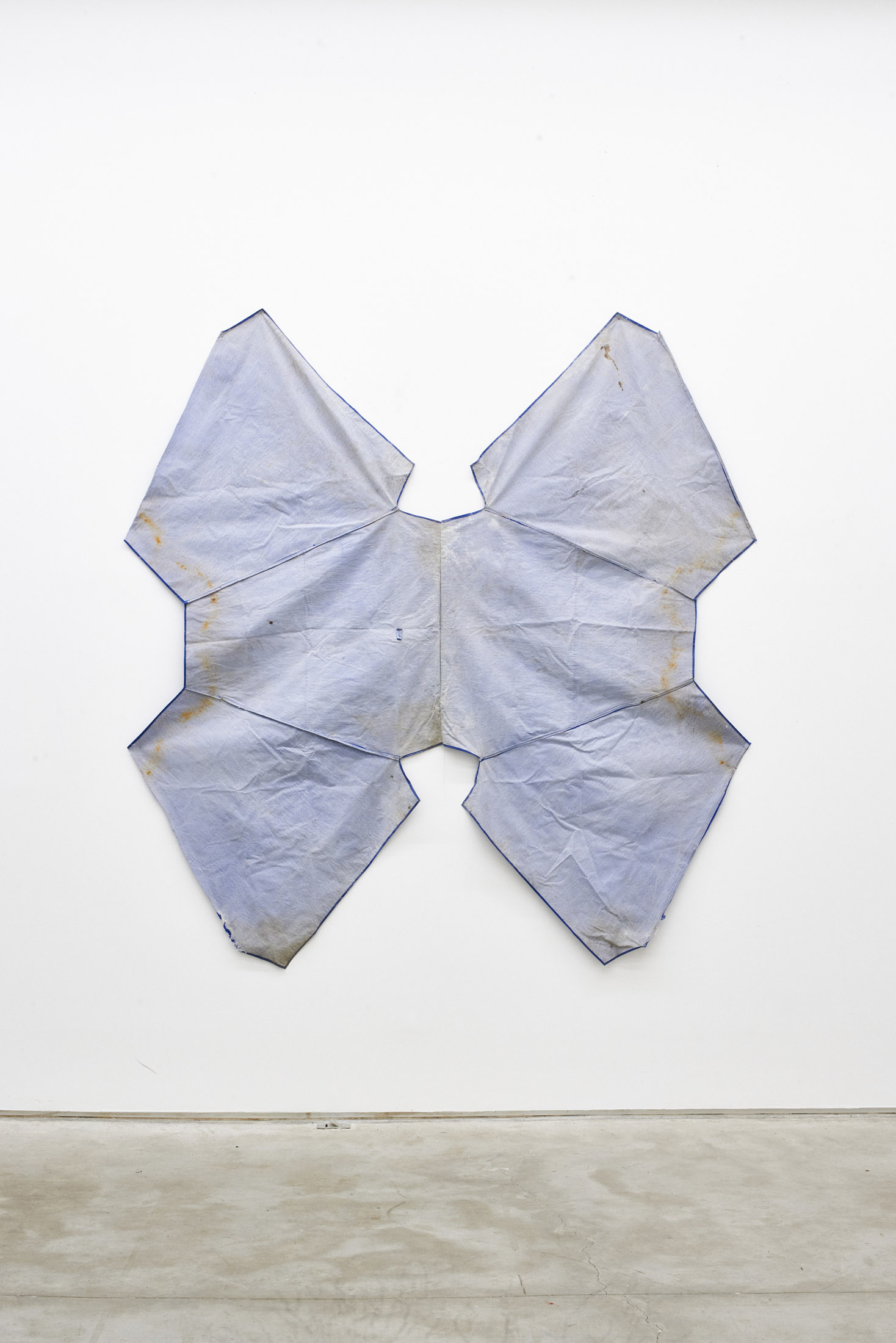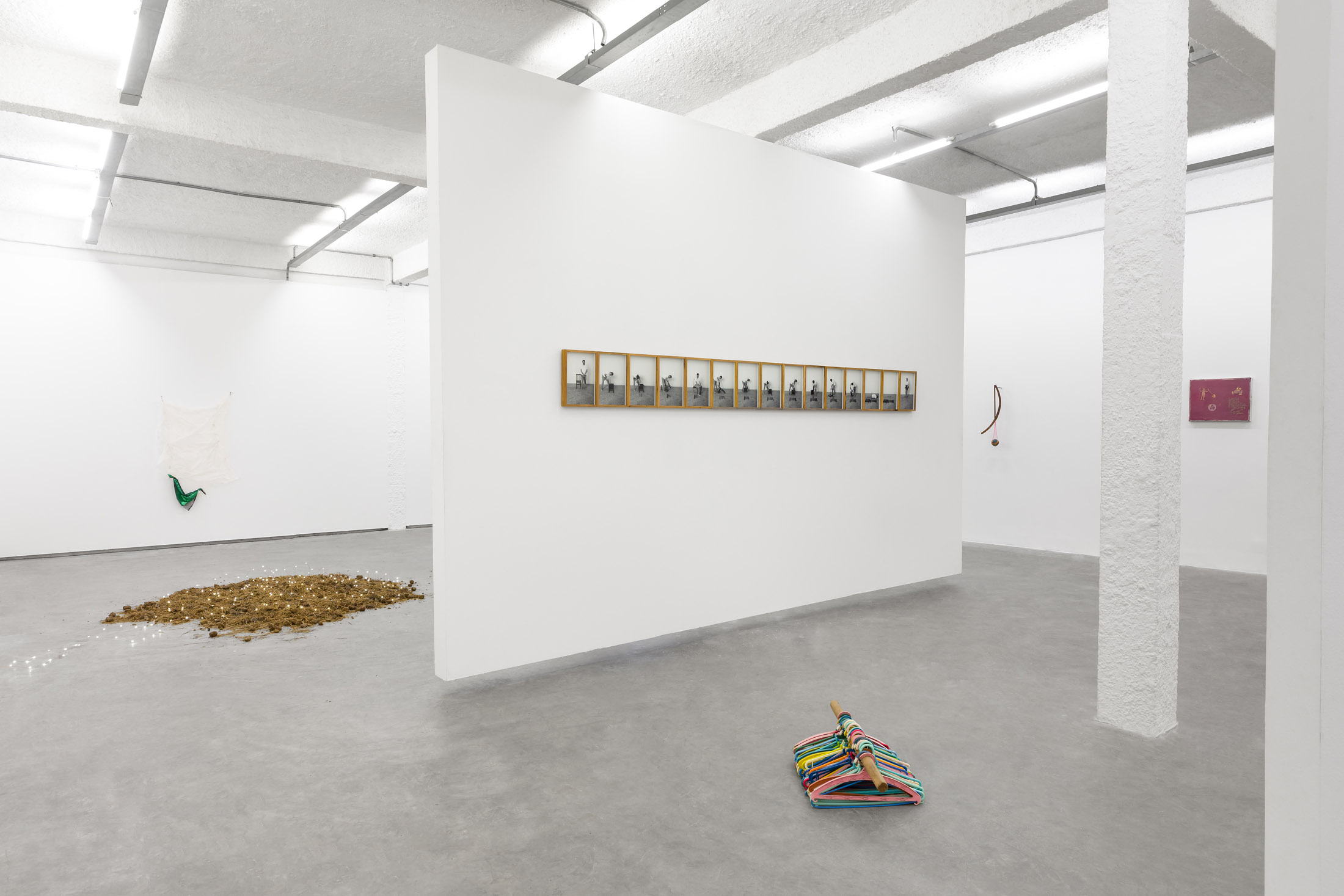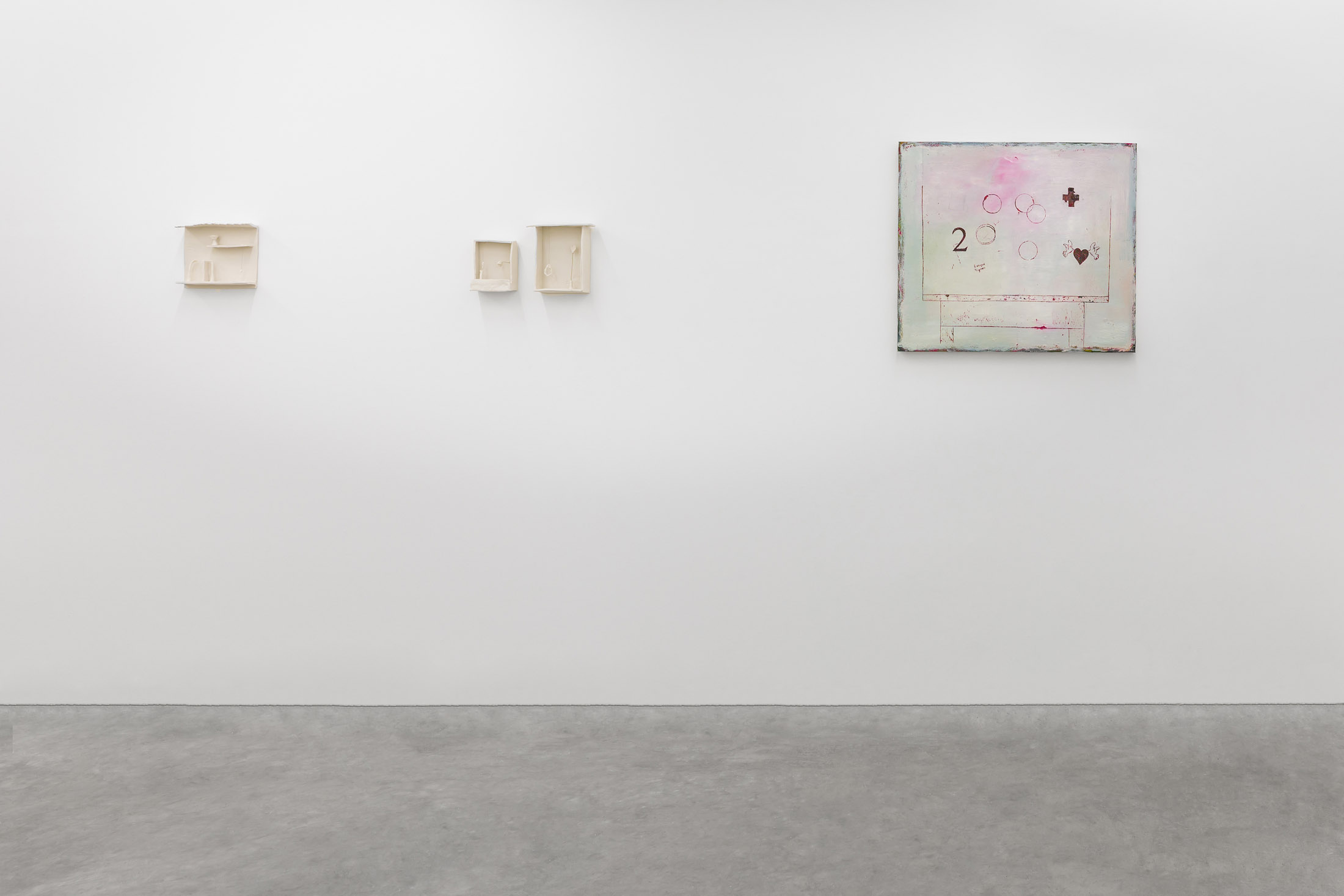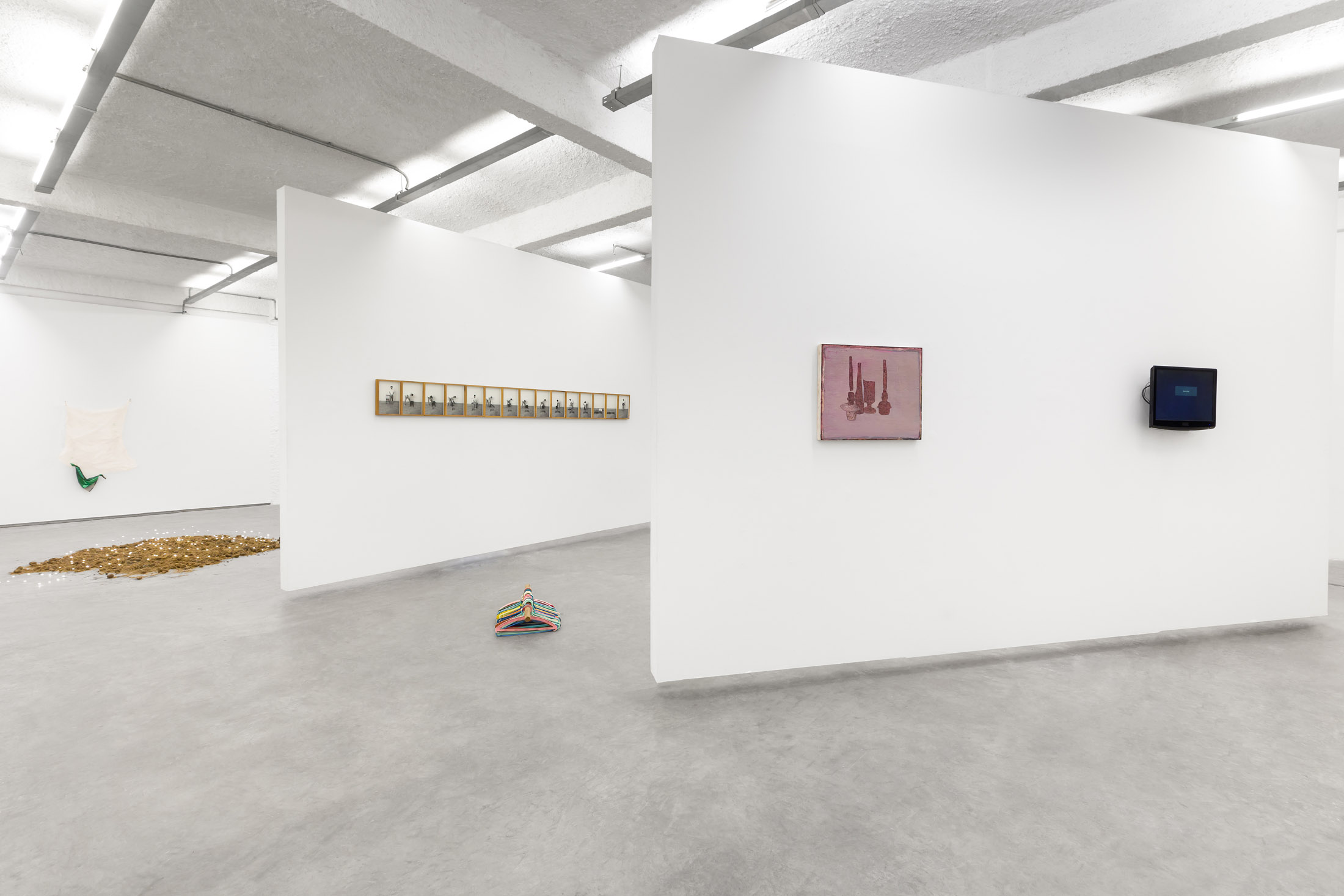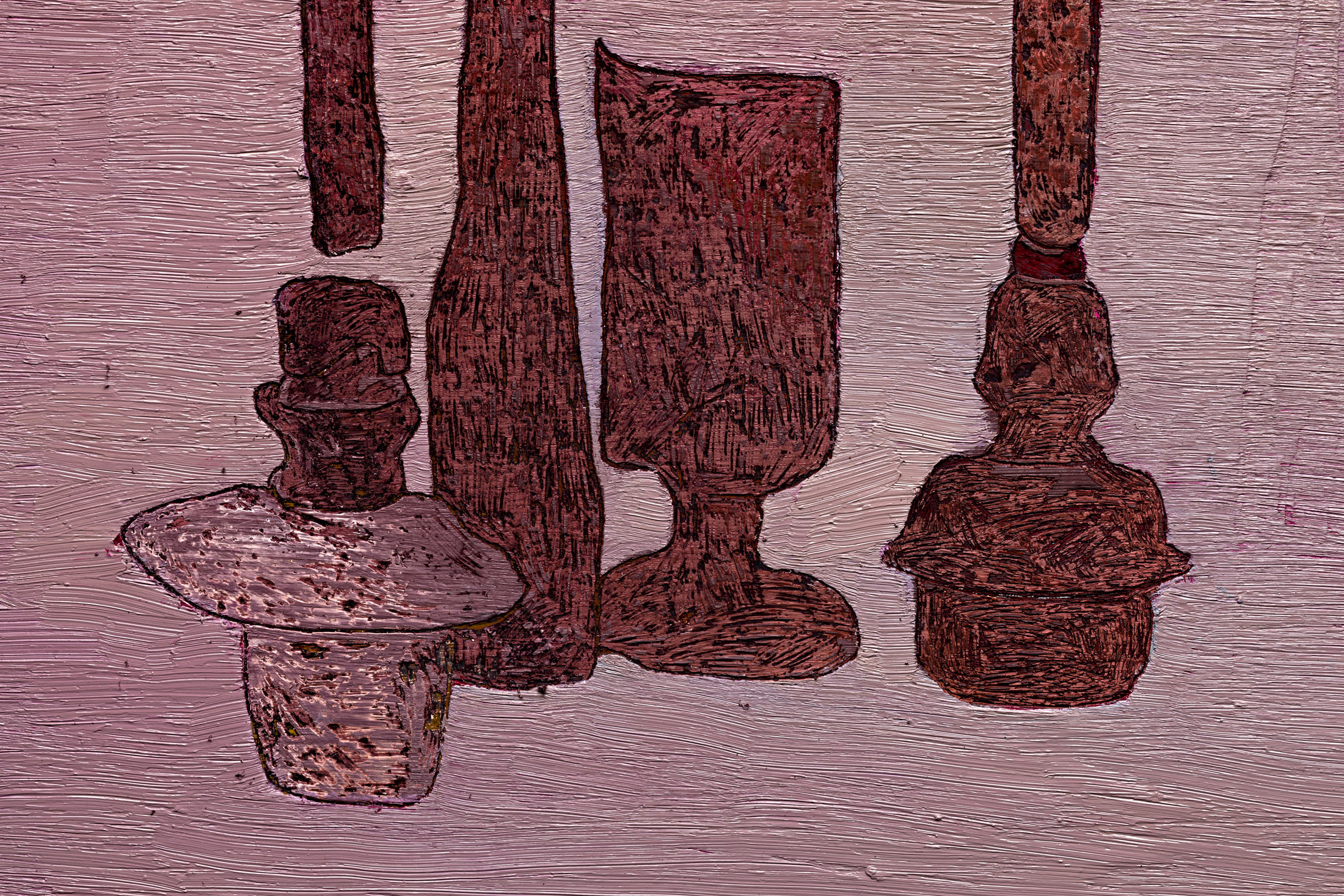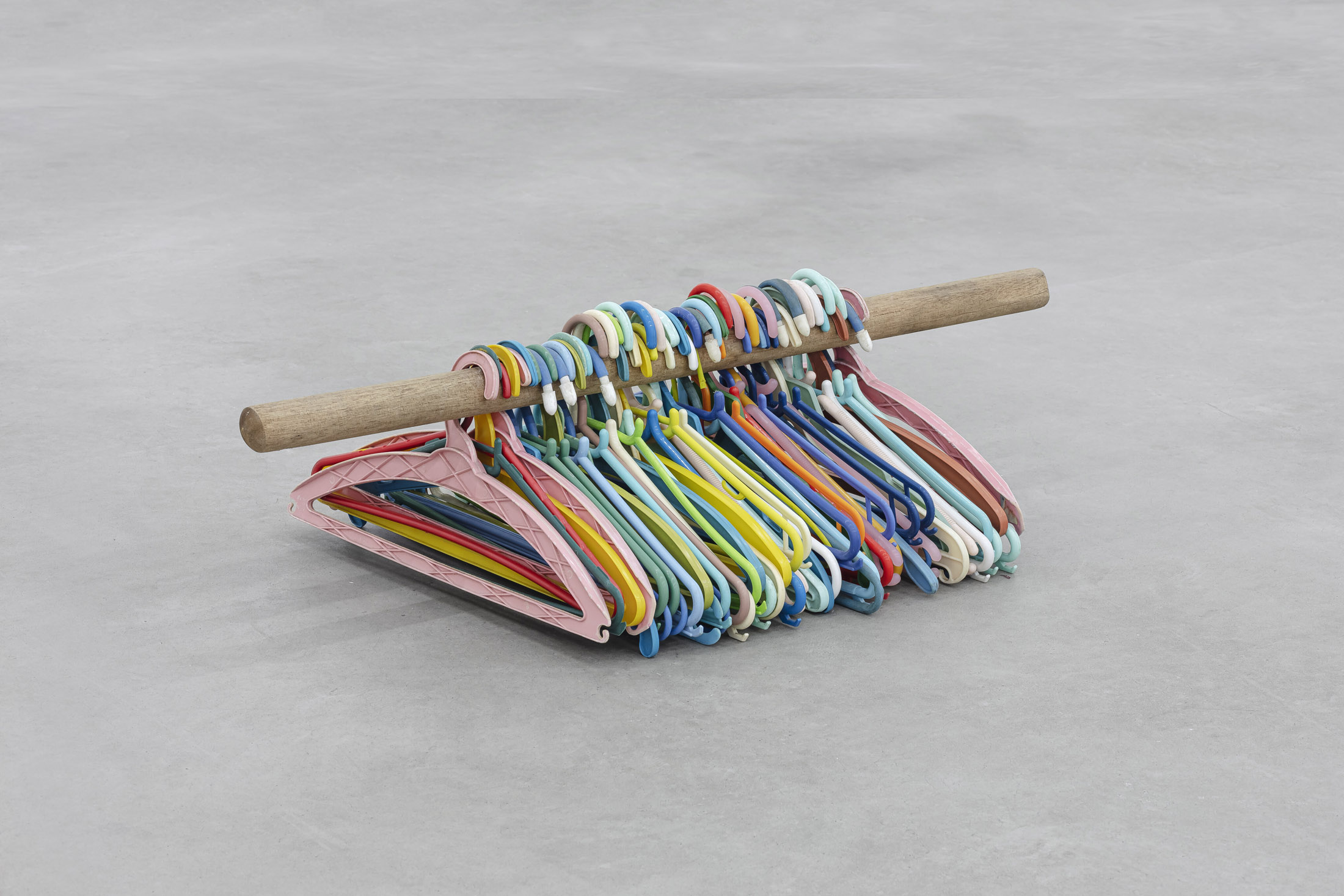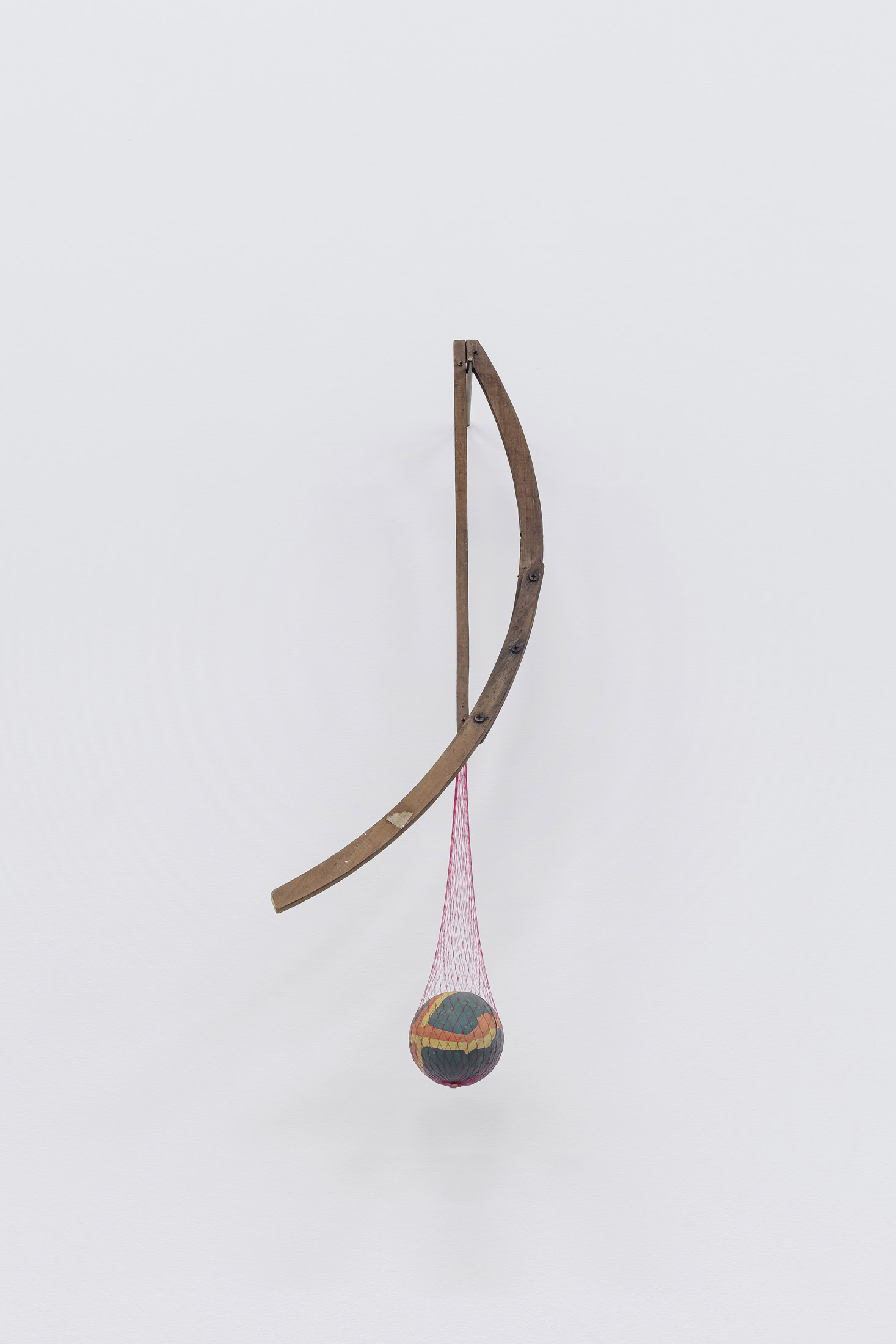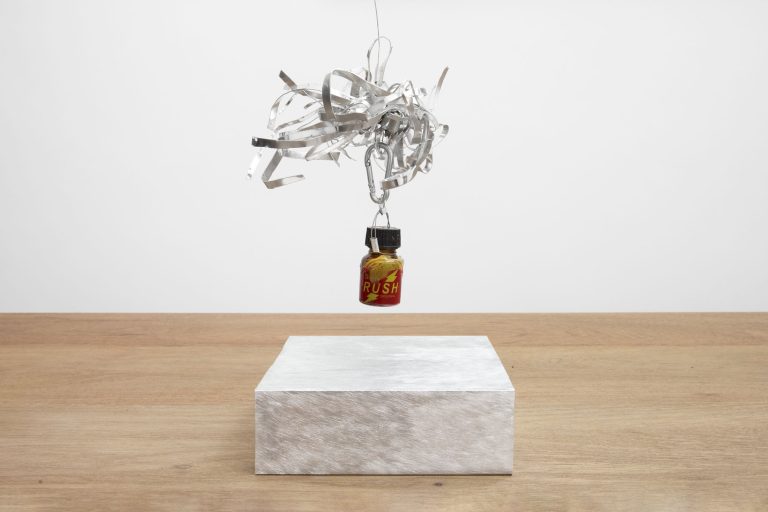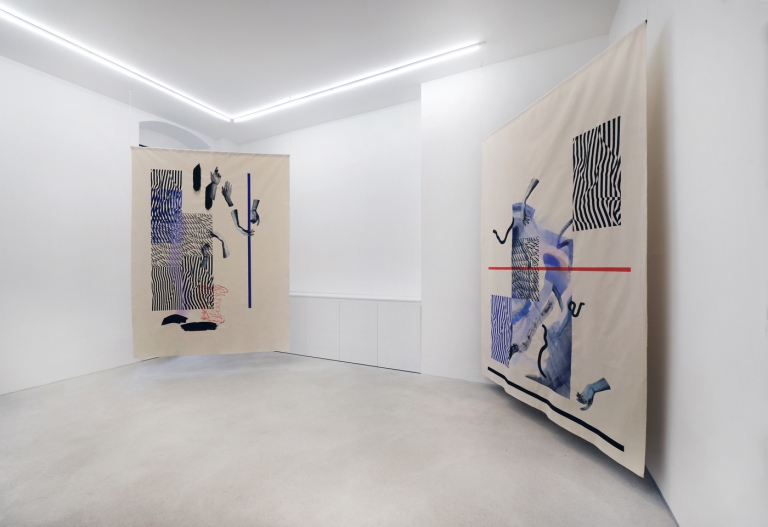Artists: Arthur Palhano, Brisa Noronha, Fabio Perino, Marcelo Amorim, Marina Weffort, Nino Cais, Zé Tepedino
Exhibition title: Melodia
Curated by: Domenico de Chirico
Venue: Fonte, São Paulo, Brazil
Date: June 24 – September 24, 2023
Photography: all images copyright and courtesy of the artist and Fonte, São Paulo
“Melodia” is a collective exhibition featuring a compendium of distinctively composed artworks. Through a variety of processes, techniques, and multidimensional approaches, the exhibition poses the question: What if these diverse works formed a melody?
“Melodia” will open on June 24th from 2:00 PM to 8:00 PM at Fonte, in São Paulo. The exhibition showcases works by Arthur Palhano, Brisa Noronha, Fabio Perino, Marcelo Amorim, Marina Weffort, Nino Cais, and Zé Tepedino. According to the curator Domenico De Chirico, this melody resounds with a dual ardor. The first arises from the unique creative impulse of each artist, while the second imparts a whispering organic unity, a “trait d’union”, to the collective body of exhibited artworks.
Melodia
Arthur Palhano, Brisa Noronha, Fabio Perino, Marcelo Amorim, Marina Weffort, Nino Cais e Zé Tepedino.
Curated by Domenico de Chirico
Opening: 6/24, Saturday, from 2pm to 8pm
Free entrance
Fonte: Rua Mourato Coelho 751, Vila Madalena, São Paulo
visitation by appointment
by email residenciafonte@gmail.com
from 06/26 to 07/22
Thursday to Saturday from 2 pm to 7 pm
For more information, please contact:
residenciafonte@gmail.com
integram.com/@residenciafonte
MELODIA
An interweaving of meaning, this is basically melody: a succession of notes that gives rise to an indefinite harmonic becoming. The diaphanous particle that becomes the watershed between noise and melodic perception remains, however, still lost in the meanders of mystery. The birth of dodecaphony has diachronically disrupted all conceptions of sound by affirming the very nonexistence of such a particle. Therefore, it may hopefully happen that the complexity of elements, the quintessence of which presents itself as notably multifaceted, at once soft and whirling, makes its way constituting a conspicuous and daring weave that often sounds harmonic to the intrigued ear. Is it not true that behind every splendid creation or good-looking being lies torment, viscera and tortuosity? It is from this sap made of blood and sweat, research and perseverance that the work takes shape. What if a compendium of works, each distinctly composed, the result of different processes and techniques, as well as multi-angled approaches, constituted a melody? A melody that flows from a dual ardor, that which led each artist to the realization of his or her work, indulging the singularity of their medium, and that which unites them, whispering eternal and laborious processes, yet decanting an incontrovertible trait d’union that, as in an organic choreography, dances to the step of multiple materialities and varied morphologies ever more surprisingly stretched out to listen to a caressing and gentle euphony.
Domenico de Chirico
Arthur Palhano – Through my practice, I investigate the symbolic interplay between objects and the pictorial construction through exercises of subtraction, scraping, and excavation, peeling back the various sensitive layers of my painting, engaging with a public dimension of a certain vandalism of the city’s remnants and the canons of art history.
Brisa Noronha – My work is characterized by exploring the delicate relationships and resistance of matter, seeing it as an active subject in the creative process. My experiments are built through my action as an artist, but also through the uncontrollable response of materials, revealing their sensitive life. My artistic procedures incorporate both intentionality and the unexpected element, shifting the notion of failure or error into a kind of pedagogy of matter. In this approach, one can witness the constant processes of material restructuring, which are vital for the continuity of any living organization. As an artist, I strive to be attentive to the physical qualities of what I observe, being interested in the arrangement of objects in everyday scenes and in the structuring of systems that stimulate my experimental research on the transformation of materials, their agency, and their limits. My work unfolds across different mediums, such as paintings, videos, photographs, and, especially, porcelain.
Fabio Perino – My artistic journey questions certain universally accepted truths and explores the contradictions raised by them. The elements of point and line, originally treated in previous works, are now dematerialized and stripped of their physical characteristics. What was once synthesized and compressed into a geometric element now expands into an unlimited dimension. While previously the line allowed us to perceive tension beyond the sensible world and the point implied a more human will associated with a more comprehensible reality, attention now turns to the incoherence and imbalance of human nature, which in its ambition to overcome the primitive act of creation is destined to oppose what it is part of. The sequence of dialogue in the pieces repeats to highlight the relationship between the human tendency toward the transcendental or universal and the objective and concrete reality of existing in this world, albeit with a constant presence of irrational elements that aim to elevate the democratic brutality of our contemporary world. The dialogue evolves from smooth and polite to something more violent and raw, without many filters other than the essential, free, and partially infinite capacity of the human being to rely on imagination and reason.
Marina Weffort – I have always been interested in woven materials. I remember learning to cut fabric by removing a thread from its weave as a child. Many years later, this gesture became definitive in the construction of my poetics. Fabric is composed of a structure of threads that cross each other orderly. The actions of cutting and unraveling, sewing and stretching, always present, reveal a sculptural procedure to what may seem initially two-dimensional. The works, mostly in light colors, are stretched on the wall, causing their shadow to be incorporated into the image of the artwork. The subtle interplay of light and shadow intersects the drawing of the new weave, while also infusing it with air, forming a kind of perforated box of lines, responsive to the slightest breath. The rarefaction of the surface and its visual and physical fragility contribute to its dissolution in space. This relationship with space and light, which permeates the fabric’s weaves, demands from the viewer a constant effort to embody these boundary structures.
Marcelo Amorim – My work questions the rhetorical existence of a neutral masculinity and the legitimation of male power in Western societies through the repetition of certain discursive images. I use the internet to collect anonymous photos and films, mainly from the 1940s to the 1970s, and act as an editor, rescuing forgotten images. I organize and recreate these images in various languages, such as serigraphy and oil painting, in order to simulate an affective sense. Through this process, I seek to evoke critical awareness from an atmosphere that appears nostalgic, intimate, and familiar.
Nino Cais – I seek to create an intermediate universe between the everyday world, which provides the raw material for my work, and a fantastical environment rooted in literature, theater, and visual arts. I cut, paste, sew, draw; I am both inside and outside the artwork, a character and an author. My works manifest in a suspended time and space, recognizable yet unexplored by the viewer, so close and yet so far, aiming to create a strangeness that is also welcoming.
Zé Tepedino – My work begins with careful observation of my surroundings, the crossing of a city that meets the sea. From this daily journey, materials, spaces, and situations are selected, most of which are banal, to be poetically revisited, reorganized, and highlighted. Through thought that composes and accompanies the tradition of art history movements, I recombine these various items through mostly simple operations, creating new arrangements, offering a fresh perception of what we know all too well. Regardless of the medium, I always understand my work as an action, whether in the landscape with large installations or in monotypes on paper. To achieve this, I employ different techniques such as sewing, painting, and sculpture, seeking to formalize ideas that always involve the process as a co-author. I aim to bring different times and traditions closer together, proposing a new perspective on the world that surrounds us.
***
Domenico de Chirico is an independent curator from Italy. Born in Terlizzi, Bari, Italy in 1983, he lives and works in Milan. He graduated with honors in Foreign Languages and Literatures with a final dissertation dealing with Comparative History of Art in Eastern European Countries (with a particular focus on Dan and Lia Perjovschi). From 2011 until 2015 he was a professor in “Visual Culture” and “Trend Research” at Milan’s European Institute of Design (IED). He collaborates with a number of international artists, galleries, institutions, art fairs, art prizes, and magazines worldwide. He has been artistic director at DAMA Fair, Turin, Italy (2016-2019). He was also a visiting tutor at Goldsmiths, University of London (2018) and a member of the Network Event for Young Curators, LISTE – Art Fair Basel, Basel, Switzerland (2018). Ongoing and upcoming projects and researches: Swab Barcelona Contemporary Art Fair, Barcelona, Spain (committee member); MIA Photo Fair, Milan, Italy (member of the scientific board and curator of the section “Beyond Photography – Dialogue”); Prisma Art Prize, Rome, Italy (curator); Swiss Institute, Rome (visiting curator); NICE – Course For Curators Of Contemporary Art Exhibitions, Turin, Italy (visiting professor). Upcoming exhibitions in various venues and cities, among which: Milan, Luzern, Rome, Bologna, Paris, Tirana, Hong Kong, Plovdiv, Florence, São Paulo, London, Bratislava, Belgrade, and so forth.
Fonte was founded in 2013 by visual artists Marcelo Amorim, Nino Cais, and Simone Moraes. It is an organization based in São Paulo that provides residences for international artists, accommodations for artists from other states in the country, and temporary studios for young artists. Fonte offers a public and free program that includes lectures, workshops, performances, video art screenings, and open studios. The space has hosted artists such as Adrián Balseca from Ecuador, Nani Lamarque from Argentina, Pilar Quinteros from Chile, Sandra Gamarra from Peru, Gabrielle Goliath from South Africa, as well as Brazilian artists Rodrigo Braga and Lyz Parayzo. Fonte has also collaborated with institutions such as Associação Cultural Videobrasil, Paço das Artes, Instituto Tomie Ohtake, among others.

